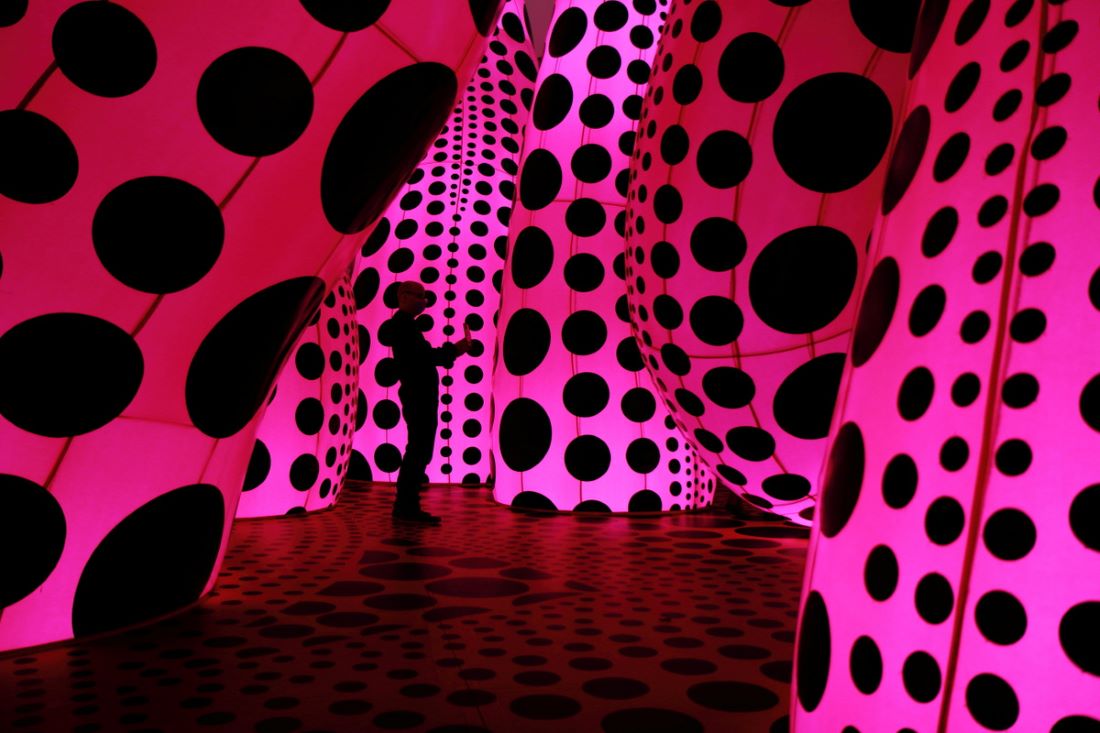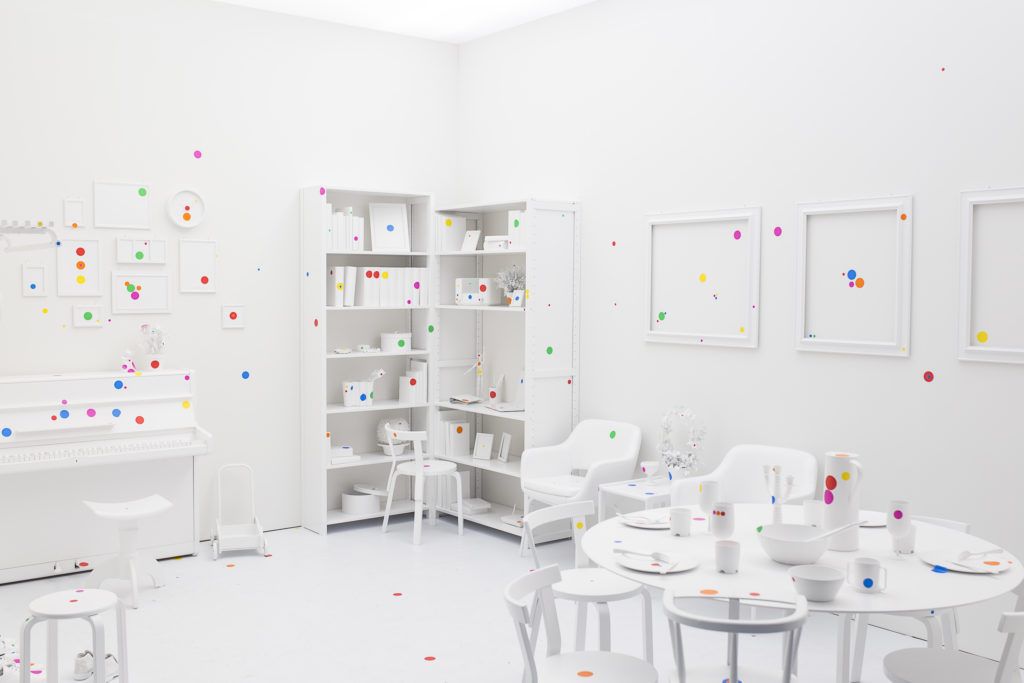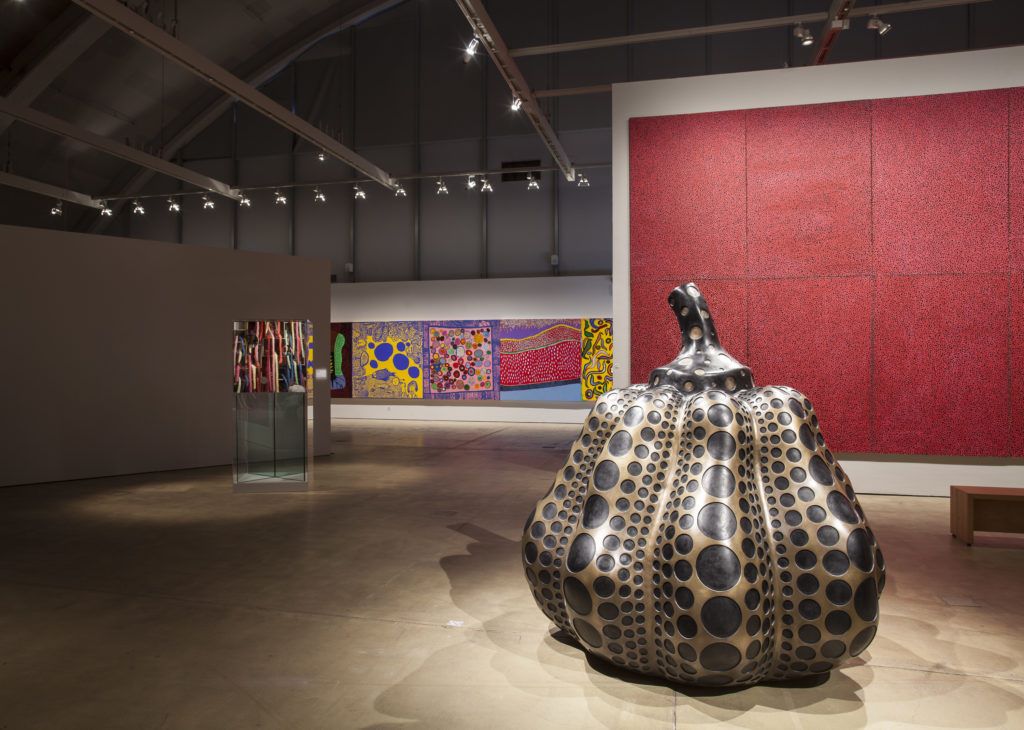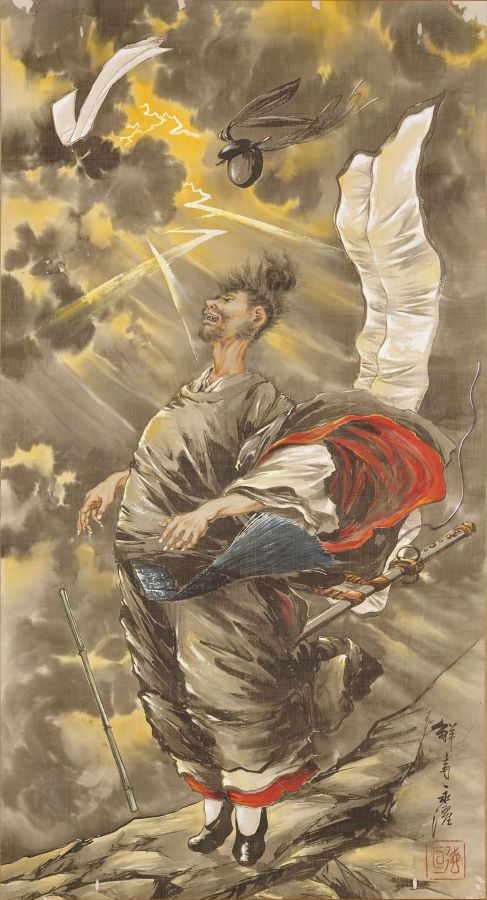Yayoi Kusama is a Japanese artist known for her vibrant and colorful artwork, which often features polka dots, pumpkins, and other whimsical motifs. Born in 1929 in Matsumoto, Japan, Kusama moved to the United States in the late 1950s and became associated with the avant-garde art scene in New York City.

Throughout her career, Kusama has worked in a variety of mediums, including painting, sculpture, performance art, and installation art. Her work is often characterized by a sense of playfulness and a celebration of life, and she has been recognized as one of the most important artists of the 20th century.
Kusama has been the subject of numerous exhibitions and retrospectives around the world, and her work has been featured in major museums such as the Museum of Modern Art in New York, the Tate Modern in London, and the National Museum of Modern Art in Tokyo. She continues to create new work to this day, and her influence on contemporary art is undeniable.
Early Life
Yayoi Kusama was born on March 22, 1929, in Matsumoto, Japan. She was the youngest of four children in a wealthy, conservative family. Her parents were displeased with her artistic pursuits and tried to discourage her from pursuing a career in art.
At the age of 10, Kusama began experiencing vivid hallucinations, which she described as “flashes of light, auras, or dense fields of dots.” These hallucinations would later become a major source of inspiration for her artwork.
In 1948, Kusama enrolled in the Kyoto Municipal School of Arts and Crafts, where she studied traditional Japanese painting. However, she quickly became disillusioned with the school’s conservative approach to art and began exploring more avant-garde styles on her own.
In 1957, Kusama moved to the United States, where she became involved in the New York City art scene. She quickly gained a reputation for her unique style, which combined elements of pop art, minimalism, and surrealism.
Artistic Career

Yayoi Kusama’s artistic career spans over six decades and includes a wide range of mediums, including painting, sculpture, installation art, performance art, and literature. Her works are known for their bold use of color, repetition, and patterns.
After moving to New York City in the late 1950s, Kusama began to gain recognition for her avant-garde artwork. Her Infinity Net series, which featured large canvases covered in repetitive, intricate patterns, was particularly well-received. She also became involved in the pop art movement and collaborated with artists such as Andy Warhol and Claes Oldenburg.
In the 1960s, Kusama began creating immersive installations, such as her Mirror Rooms and Infinity Rooms. These works often featured mirrored walls and floors, creating a sense of infinite space. Kusama’s installations have been exhibited in museums and galleries around the world, including the Hirshhorn Museum and Sculpture Garden in Washington, D.C. and the Tate Modern in London.
Kusama has continued to create art well into her 90s, and her works remain popular with audiences of all ages. In recent years, she has collaborated with fashion designers, created large-scale public sculptures, and published several books, including her autobiography, Infinity Net.
Major Works

Yayoi Kusama is known for her unique and vibrant art that often features polka dots, infinity mirrors, and bright colors. Here are some of her most notable works:
- Infinity Mirror Rooms: These immersive installations feature mirrored rooms with LED lights and other elements that create a sense of infinity and wonder. Some of her most famous works in this series include “Phalli’s Field” (1965) and “Infinity Mirrored Room – The Souls of Millions of Light Years Away” (2013).
- Pumpkin Sculptures: Kusama has a fascination with pumpkins, which she often incorporates into her art. Her pumpkin sculptures are whimsical and playful, and can be found in various sizes and materials.
- Polka Dot Paintings: Kusama’s polka dot paintings are some of her most recognizable works. She often uses bright colors and repetitive patterns to create a sense of movement and energy.
- Performance Art: Kusama has also created a number of performance art pieces throughout her career. One of her most famous performances is “Narcissus Garden” (1966), in which she sold mirrored balls to visitors at the Venice Biennale.
These are just a few examples of Yayoi Kusama’s vast and varied body of work. Her art continues to inspire and captivate audiences around the world.
Themes and Techniques

Yayoi Kusama’s art is known for its unique themes and techniques that have captivated audiences around the world. Here are some of the key themes and techniques that are commonly found in her work:
- Infinity: One of Kusama’s most well-known themes is infinity. This is often represented through her use of polka dots, which are meant to symbolize the infinite nature of the universe. Kusama has said that she uses polka dots to “obliterate” herself and merge with the infinite.
- Repetition: Another common theme in Kusama’s work is repetition. This is often seen in her use of repeated patterns and motifs, such as polka dots or pumpkins. Kusama has said that repetition is a way for her to “escape from the self.”
- Psychedelia: Kusama’s work is often associated with the psychedelic art movement of the 1960s. This is due to her use of bright colors, bold patterns, and optical illusions that create a sense of disorientation and sensory overload.
Along with these themes, Kusama is also known for her unique techniques, which often involve the use of unconventional materials and methods:
- Infinity Rooms: Perhaps Kusama’s most famous technique is her creation of immersive “infinity rooms.” These rooms are designed to create a sense of infinite space through the use of mirrors and lights. Visitors often describe feeling as though they are floating in space when inside these rooms.
- Net Paintings: Kusama is also known for her “net paintings,” which are created by covering canvases with a net-like pattern and then painting over them. This creates a sense of depth and texture that is unique to Kusama’s work.
- Performance Art: In addition to her visual art, Kusama has also created a number of performance art pieces throughout her career. These often involve Kusama herself dressed in one of her signature polka dot outfits, interacting with the audience in various ways.
Legacy and Influence

Yayoi Kusama’s impact on the art world has been enormous. Her unique style and use of bold colors and patterns have inspired many artists, and her work has been exhibited in galleries and museums around the world.
One of Kusama’s most significant contributions to the art world is her role in the development of the pop art movement. Her use of everyday objects and commercial materials in her art was groundbreaking, and it influenced many pop artists, including Andy Warhol and Claes Oldenburg.
Kusama’s work has also had a significant impact on contemporary art. Her use of repetition and pattern has been influential in the development of minimalism and conceptual art, and her immersive installations have inspired many contemporary artists to create large-scale, interactive works.
In addition to her influence on the art world, Kusama’s work has also had an impact on popular culture. Her iconic polka dot patterns have been used in fashion, design, and advertising, and her collaborations with brands like Louis Vuitton and Marc Jacobs have brought her work to a wider audience.
Overall, Yayoi Kusama’s legacy is one of innovation, creativity, and boundary-pushing. Her influence on the art world and popular culture will continue to be felt for many years to come.



